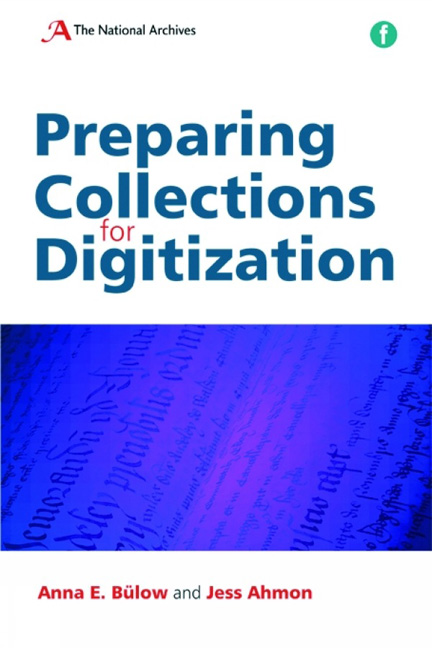Book contents
- Frontmatter
- Contents
- Acknowledgements
- List of figures and tables
- Introduction
- 1 Digitization in the context of collection management
- 2 Before you digitize: resources, suppliers and surrogates
- 3 The digital image Ross Spencer
- 4 The process of selection
- 5 Surveying collections
- 6 Equipment for image capture
- 7 Preparation of document formats and fastenings
- 8 Preparation of damaged documents
- 9 Setting up the imaging operation
- Conclusion
- Further reading
- Index
6 - Equipment for image capture
Published online by Cambridge University Press: 08 June 2018
- Frontmatter
- Contents
- Acknowledgements
- List of figures and tables
- Introduction
- 1 Digitization in the context of collection management
- 2 Before you digitize: resources, suppliers and surrogates
- 3 The digital image Ross Spencer
- 4 The process of selection
- 5 Surveying collections
- 6 Equipment for image capture
- 7 Preparation of document formats and fastenings
- 8 Preparation of damaged documents
- 9 Setting up the imaging operation
- Conclusion
- Further reading
- Index
Summary
Introduction
Introduction
As seen in Chapter 5 ‘Surveying Collections’, the physical nature of the documents can be highly diverse. These physical attributes will have a bearing on the choice of equipment because, needless to say, the equipment should not only be capable of capturing images of the required specification, but should do so without undue risk to the documents. There is a bewildering array of scanning products on the market with different capabilities and features, and different projects will have different requirements. Some equipment is designed for very specific applications and so would be perfect for a particular project but not suitable in the long term for scanning any other document format. On the other hand, a more flexible set-up can be used over the course of several different projects but may require some technical expertise to get the best results each time.
Choosing equipment for image capture is a common feature of all digitization projects and so there is an abundance of literature on the subject; see ‘Further Reading’ for details. This chapter will focus on the requirements of the original documents and the suitability of different types of equipment for different documents.
Risks during imaging
It is possible to image most documents safely and successfully if they are handled in an appropriate way using suitable equipment. However, digitization does involve some risks, the greatest of which is the risk of physical damage from handling.
Physical damage
In general, image capture involves handling that is far more intensive than the handling that a document will receive in an institution's reading room. Not only is there time pressure but also each sheet must be handled in such a way that every part of the page is exposed to the scanning device. This in itself can be hazardous for a fragile document. Any tears in a sheet may lengthen and documents may as a result become fragmented. Brittle paper is particularly vulnerable.
A document may come under strain if it is not fully supported and part of it is overhanging the edge of the scanning bed. Imaging will also often require a document to be held against a glass plate or under a lid, which can cause damage if the document is not carefully positioned, and can introduce fresh folds if the document is fastened in the corner.
- Type
- Chapter
- Information
- Preparing Collections for Digitization , pp. 91 - 108Publisher: FacetPrint publication year: 2010



